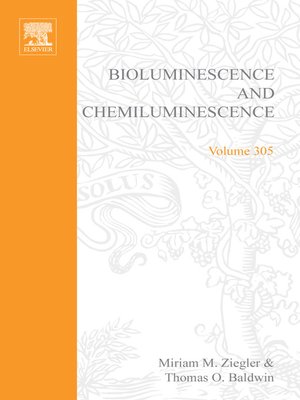
Sign up to save your library
With an OverDrive account, you can save your favorite libraries for at-a-glance information about availability. Find out more about OverDrive accounts.
Find this title in Libby, the library reading app by OverDrive.



Search for a digital library with this title
Title found at these libraries:
| Loading... |
Since the publication of Bioluminescence and Chemiluminescence, Part B, genes have been cloned that encode luciferases from an array of bioluminescent organisms, novel applications of these genes have been developed, and much has been learned of the fundamental chemistry, biochemistry, structural biology, and biophysics of these intriguing enzymes. New strategies for application of chemiluminescence technology have been developed and refined, promising to further reduce the need to use radioisotopes in basic research and clinical laboratory settings. Methods for detection of low levels of light continue to push the limits of detection, allowing ready monitoring in real time of intricate subcellular processes within living cells. This book affords a glimpse of the state of the art of a rapidly advancing field, and presents to users of these methods a detailed reference of current activities in the field.The critically acclaimed laboratory standard for more than forty years, Methods in Enzymology is one of the most highly respected publications in the field of biochemistry. Since 1955, each volume has been eagerly awaited, frequently consulted, and praised by researchers and reviewers alike. Now with more than 300 volumes (all of them still in print), the series contains much material still relevant today—truly an essential publication for researchers in all fields of life sciences. Outlines the use of luminescent reporter technologies to monitor gene expression and protein trafficking Describes the luminescence-based clinical assay technologies Details the basic biochemistry, biophysics, and chemistry of light-emitting reactions that are critical for applications Includes explanations of the instrumentation used for detection and quantification of low level light Shows the new applications of luminescence-based technologies that result largely from broad advances in recombinant DNA technologies and nonscale methods






